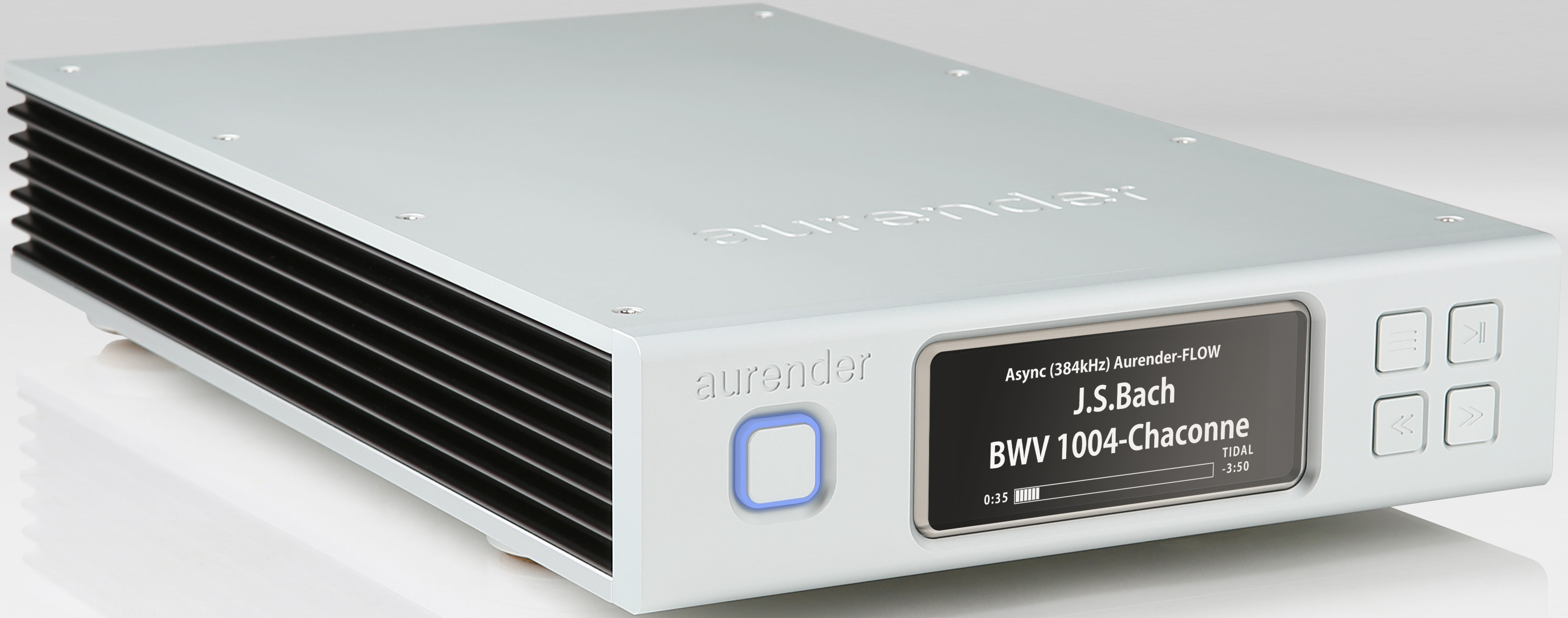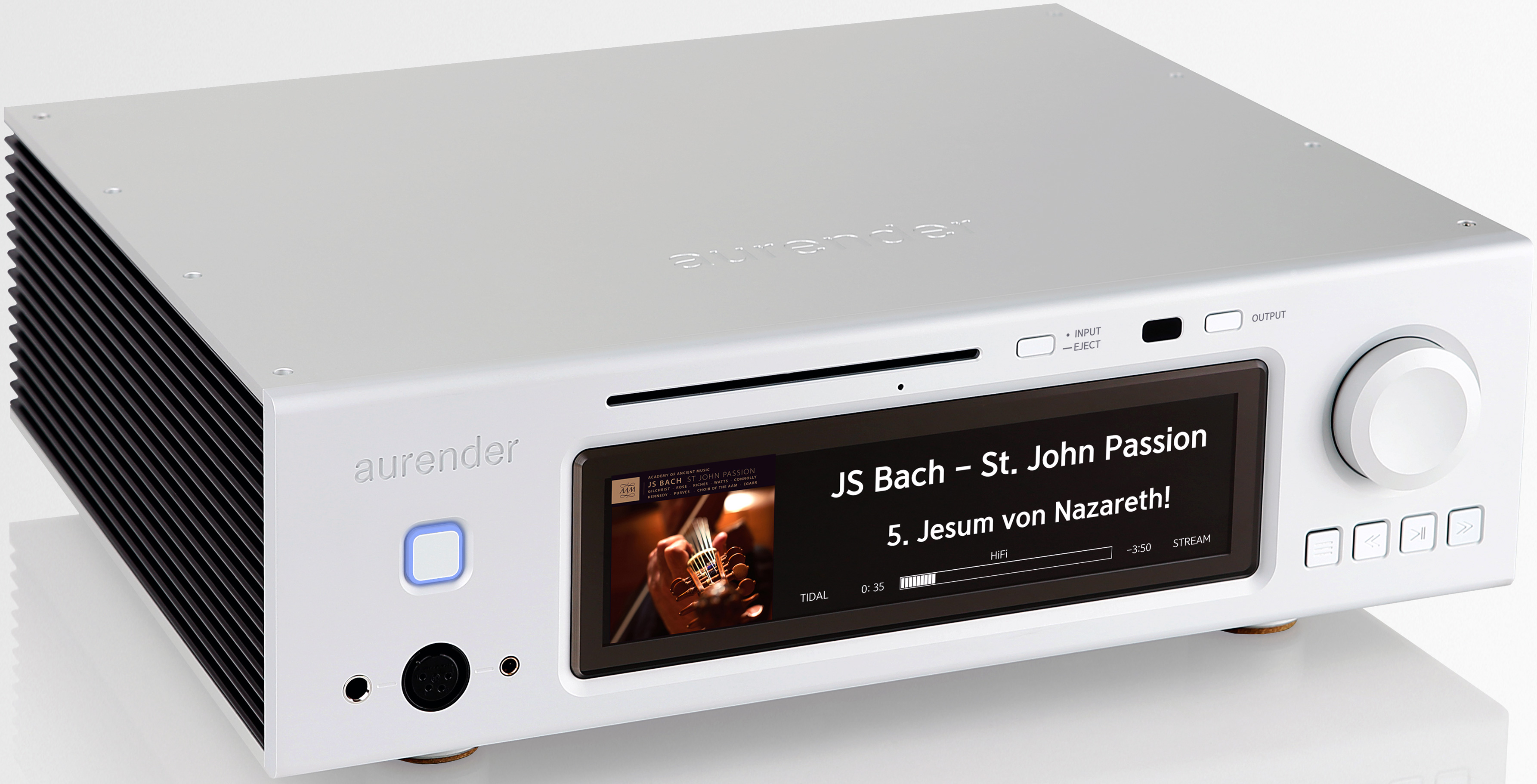There are days when I need to refresh my listening habits and switch to the analog system headed by the Clearaudio Master Innovation turntable and the Top Wing Suzaku coreless cartridge, before playing music on the SACD player again, vice versa. Prior to receiving the Aurender, hard-disk and Tidal music listening meant connecting a USB hard-disk to my Apple MacBook Pro and having the Audirvana streaming platform for Tidal, while the Oppo UDP-205 would function as renderer for the 2014 Esoteric K-03. A Combak Harmonix coaxial digital cable and a Light Harmonic Lightspeed USB cable would link the Oppo to the Esoteric alternately. Came 2020 and the leaps and bounds advancements in hard-disk music playback technology in the preceding years seemed to have subsided. I thought the technology might’ve reached maturity into which for me to dip my toes.
Aurender is one of a few companies specializing in high resolution hard-disk and streaming playback, and I was sent the N100SC, an N-series half-width dandy server/streamer in a tastefully designed industrial-grade aluminum enclosure. Though half-width, it is 14 inches deep with all connectors in the rear. Appropriate placement is warranted. There are thirteen current models in the company’s server/streamer product lineup. The entry-level N variants begins with the USB output-only N100H at $2,700 that comes with a 2TB hard-disk nonetheless, the $3,500 N100C equipped with both USB and Coaxial digital outputs and a 4TB hard-disk, and the $3,300 N100SC with the same outputs and optional hard-disk, such as the subject of this review which is equipped with a user-installed 2 TB hard-disk. Obviously, Dagogo readers who are 100% streamers don’t need the optional hard-disk, and conversely for those among us with a humongous collection, there’s the recently released Samsung 870 WVO 8TB SSD!
There are also the $8,000 N10-4TB and $8,500 N10-8TB server/streamers with a USB 2.0 port that utilizes a OCXO-based precision clock to produce up to DSD128 in resolution via DSD-over-PCM, and then the RCA Coaxial, BNC, Toslink and AES/EBU outputs to deliver up to 24 Bit 192KHz of resolution.
Per John-Paul Lizars, Director of Sales and Marketing, “We take great care to minimize the jitter and noise [on the N10 and higher models] by using two high-precision OCXO (oscillators). Each one handles a different sampling frequency range (multiples of 44.1KHz and 48KHz). And to minimize AC power noise we pay special attention to grounding and the use of ultra low-noise regulators.
We always suggest customers try both the USB and coax to determine which works better with their DAC, keeping in mind that the coax has a 192 KHz sampling rate limit, while USB is good out to native DSD.”
The Coaxial digital output on the N100SC is a converted signal from the USB output and does not feature the precision of the OCXO clock.
Moving up the hierarchy are the “A”, “ACS”, “X” and the flaghship “W” series.
The “A” series begins with the $3,900 A100, an MQA DAC featuring the Asahi Kasei AK4490 32 Bit 384KHz chipset, RCA analog outputs, volume control and a 2TB hard-drive. The $5,500 A10 adds dual-mono DAC operation and a 4TB hard-drive. The $18,000 A30 uses two AK4497 in dual mono configuration with dual mono linear power supplies, outputs up to 32 Bit 768KHz through its USB, up to 24 Bit 192KHz through its RCA SPDIF, BNC SPDIF and the two Toslink outputs, complete with an OCXO-based precision clock, one dedicated transformer for the Intel N4200 Quad Core CPU, another for the field programmable gate array and the clock, a third one for the three headphone outputs, and two more for the DAC, plus a Teac CD-ROM Drive, Super Capacitor Based Internal UPS for safe shutdown, double-isolated Gigabit Ethernet, a 10TB hard-disk, etc.
There are also three models in the ACS series, namely the $3,500 compact ACS100 which comes complete with the server/streamer functionality with a CD ripper and optional hard-disk, the $6,000 full-chassis ACS10-16TB which adds a 16TB hard-disk, and the $7,500 ACS10-24TB, adding a 24TB hard-disk.
Atop all models is the digital output-only $22,000 W20SE, an upgraded version of the W20: “New Flagship Caching Music Server and Streamer / MQA Core-Decoder / 4TB SSD Storage with 1TB SSD Caching / Battery Operated Power Supply for Audio / Full-Linear Power Supply for CPU / Double-Isolated LAN and Audio USB Port / Dual-AES/EBU up to 24-Bit 384KHz, Coaxial, BNC and Optical Outputs / Word Clock Input.” For readers using a separate DAC and demanding a flagship server and streamer, the W20SE is it. Otherwise, the A30 with analog output is the ultimate Aurender playback machine.
Primary auditioning of the N100SC took place in conjunction with the new $23,000 Esoteric K-01XD SACD player and the $19,000 Bricasti Design M21 DSD DAC, although the Aurender also saw action with the $150,000 Audio Note Fifth Element/Fifth Force 24bit/96KHz DAC and the $8,500 Audio Research DAC 9 Tube (review forthcoming). Operating the Aurender involved downloading the company’s app onto my iPad Mini, which would control the choice of accessing the internal hard-disk directly for playback, or to connect up to two external USB hard-disks, or to access the Tidal streaming platform via Ethernet. Digital cable was the Light Harmonics Lightspeed USB.
The Aurender was connected to my home network via an Ethernet connection through a pair of Zyxel Powerline adaptors, one near the Xfinity router in the other room that transmits and another one in the same room as the Aurender for the receiving end. During the review period, the transmitting module malfunctioned and derailed the auditioning process; good thing Zyxel sent me a replacement two days later. Price to pay for Ethernet until the day comes when a new standard would allow wireless connection all the way.
- (Page 1 of 2)
- Next page →







Good you went with an Ethernet cable connection. I had a similar devise from another company which used a sender and receiver box. It never worked from day one, and I am glad. I sent it back and have used Ethernet since.
I think it wise to put money into outstanding components instead of gadgets.
Aurender software (conductor app) used to be good, now it’s very buggy, and rapidly losing ground to Roon. As a small example, consider the following:
1. In the past you could add favorite songs to the queue, and then save those queued songs as a playlist to Tidal. That functionality no longer works (at least for me).
2. In the past, in Favorites the alphabet was listed along the right side of the screen. To jump to that letter, you could just touch it. That functionality is now gone. You now must scroll through all the songs. On an iPad mini with 1,700 Favorite songs that can take a very long time.
3. In the past selecting “Songs”, and “Favorites”, one could easily scroll from beginning to end. Now only 50 songs load, and you must then touch “Load More”, reaaallly slow. With 1,700 songs you must go through this process 34 times!!
a. Now after you finally scroll through dozens and dozens of screens to get to the desired Favorite song, and then you select an action (say play now). You lose your place in Favorites and then need to re-load all the songs AGAIN (see above 34 different screens to get to the letter Z).
4. In the past, when you loaded Favorites into the queue, the songs maintained the solid (selected) star. Now some of the songs lose their solid star. So if you are listening to a song in the queue and decide it is no longer a Favorite, you can no longer deselect it, as it already shows it is deselected, though in fact, it isn’t.
5. In the past, under “Songs”, “Favorites”, one could easily touch a star to deselect it and thereby remove it from Favorites. Now the song just gets added to the queue.
6. I understand Wadax makes a nice server (Atlantis) that is both MQA compatible and a Roon Core. Now that Covid is over, time to find an audio show to take a listen and replace this very buggy Aurender. Isn’t convenience the point of streaming after all?